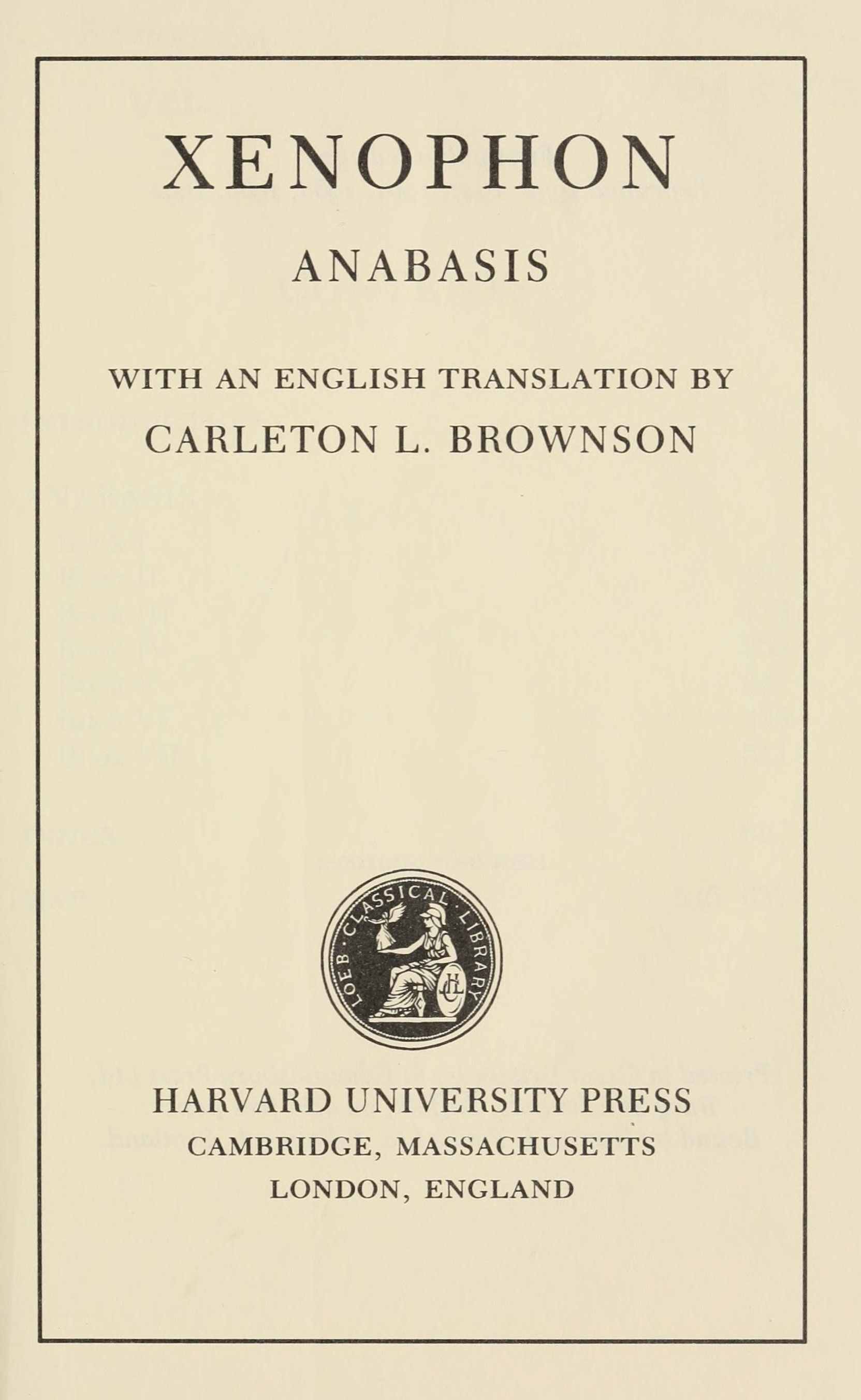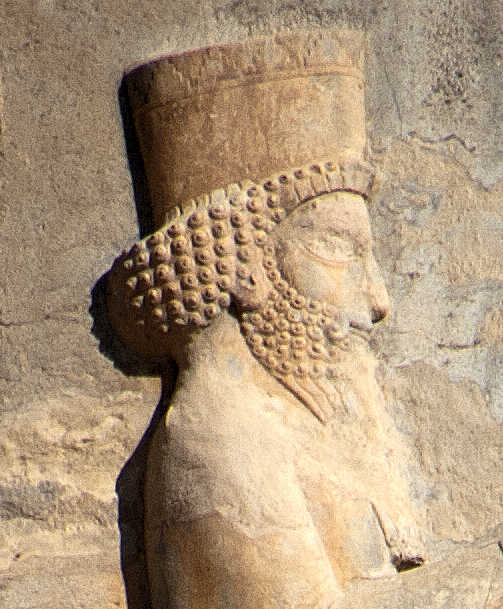|
Carduchii
The Carduchii or Karduchoi were a group of warlike tribes that inhabited an area stretching from the Botan River in the south to an area north of Cizre in present-day Turkey. Sometime after 401 BC, they expanded their authority into the northern Tigris valley. Between 165–95 BC, they established the independent kingdom of Gordyene, seemingly as a result of the power vacuum that took place following the weakening of the Greek Seleucid Empire (312 BC – 63 BC). Name and origins The ethnolinguistic origin of the Carduchii is uncertain, though it seems they were of non-Armenian origin based on the accounts of the Greek historian Xenophon (died 354/55 BC) and classical writers such as Strabo (died 24 AD) and Plutarch (died after 119 AD). The Iranologist and Kurdologist Garnik Asatrian considers them to have been an indigenous pre Indo-European people inhabiting the area before Indo-Aryan migrations. The origin of the name "Carduchii" is uncertain. Some historians have sugges ... [...More Info...] [...Related Items...] OR: [Wikipedia] [Google] [Baidu] |
Gordyene
Gordyene or Corduene (; ; ) was an ancient historical region, located south of Lake Van, present-day eastern Turkey. According to the ''1911 Encyclopædia Britannica'', Gordyene is the ancient name of the region of '' Bohtan'', now Şırnak Province. It is mentioned as ''Beth Qardu'' in Syriac sources and is described as a small vassal state between Armenia and Parthian Empire in the mountainous area south of Lake Van in what is now Turkey. Corduene must also be sought on the left bank of the Tigris. Corduene is documented as a fertile mountainous district, rich in pasturage. The Kingdom of Gordyene emerged from the declining Seleucid Empire, and for most of its history it was a province of the Roman Empire and acknowledged the sovereignty of Rome. From 189 to 90 BCE, it enjoyed a period of independence. The people of Gordyene were known to have worshiped the Hurrian chief deity and weather god Teshub. Origins The origin of the Carduchii is uncertain, though it seems they ... [...More Info...] [...Related Items...] OR: [Wikipedia] [Google] [Baidu] |
Anabasis (Xenophon)
''Anabasis'' ( ; ; ) is the most famous work of the Ancient Greece, Ancient Greek professional soldier and writer Xenophon. It gives an account of the expedition of the Ten Thousand (Greek), Ten Thousand, an army of Greek mercenaries hired by Cyrus the Younger to help him seize the throne of Achaemenid Empire, Persia from his brother, Artaxerxes II, in 401 BC. The seven books making up the ''Anabasis'' were composed . Although as an Ancient Greek vocabulary word () meaning 'embarkation', 'ascent' or 'mounting up', the title ''Anabasis'' has been rendered by some translators as ''The March Up Country'' or as ''The March of the Ten Thousand''. The story of the army's journey across Asia Minor and Mesopotamia is Xenophon's best known work and "one of the great adventures in human history". Authorship Xenophon, in his ''Hellenica#Xenophon's Hellenica, Hellenica'', did not cover the retreat of Cyrus but instead referred the reader to the ''Anabasis'' by "Themistogenes of Syracuse"� ... [...More Info...] [...Related Items...] OR: [Wikipedia] [Google] [Baidu] |
Kurds
Kurds (), or the Kurdish people, are an Iranian peoples, Iranic ethnic group from West Asia. They are indigenous to Kurdistan, which is a geographic region spanning southeastern Turkey, northwestern Iran, northern Iraq, and northeastern Syria. Consisting of 30–45 million people, the global Kurdish population is largely concentrated in Kurdistan, but significant communities of the Kurdish diaspora exist in parts of West Asia beyond Kurdistan and in parts of Europe, most notably including: Turkey's Central Anatolian Kurds, as well as Kurds in Istanbul, Istanbul Kurds; Iran's Khorasani Kurds; the Caucasian Kurds, primarily in Kurds in Azerbaijan, Azerbaijan and Kurds in Armenia, Armenia; and the Kurdish populations in various European countries, namely Kurds in Germany, Germany, Kurds in France, France, Kurds in Sweden, Sweden, and the Kurds in the Netherlands, Netherlands. The Kurdish language, Kurdish languages and the Zaza–Gorani languages, both of which belong to the Wes ... [...More Info...] [...Related Items...] OR: [Wikipedia] [Google] [Baidu] |
Xenophon
Xenophon of Athens (; ; 355/354 BC) was a Greek military leader, philosopher, and historian. At the age of 30, he was elected as one of the leaders of the retreating Ancient Greek mercenaries, Greek mercenaries, the Ten Thousand, who had been part of Cyrus the Younger's attempt to seize control of the Achaemenid Empire. As the military historian Theodore Ayrault Dodge wrote, "the centuries since have devised nothing to surpass the genius of this warrior". For at least two millennia, it has been debated whether or not Xenophon was first and foremost a general, historian, or philosopher. For the majority of time in the past two millennia, Xenophon was recognized as a philosopher. Quintilian in Institutio Oratoria, ''The Orator's Education'' discusses the most prominent historians, orators and philosophers as examples of eloquence and recognizes Xenophon's historical work, but ultimately places Xenophon next to Plato as a philosopher. Today, Xenophon is recognized as one of the gr ... [...More Info...] [...Related Items...] OR: [Wikipedia] [Google] [Baidu] |
Ten Thousand
The Ten Thousand (, ''hoi Myrioi'') were a force of mercenary units, mainly Greeks, employed by Cyrus the Younger to attempt to wrest the throne of the Persian Empire from his brother, Artaxerxes II. Their march to the Battle of Cunaxa and back to Greece (401–399 BC) was recorded by Xenophon, one of their leaders, in his work '' Anabasis''. Campaign Between 401 and 399 BC, the Ten Thousand marched across Anatolia, fought the Battle of Cunaxa, and then marched back to Greece. Xenophon stated in '' Anabasis'' that the Greek heavy troops routed their opposition twice at Cunaxa at the cost of only one Greek soldier wounded. Only after the battle did they hear that Cyrus had been killed, making their victory irrelevant and the expedition a failure. The Ten Thousand found themselves far from home with no food, no employer, and no reliable allies. They offered to make their Persian ally Ariaeus king, but he refused on the grounds that he was not of royal blood and would not f ... [...More Info...] [...Related Items...] OR: [Wikipedia] [Google] [Baidu] |
Akkadian Language
Akkadian ( ; )John Huehnergard & Christopher Woods, "Akkadian and Eblaite", ''The Cambridge Encyclopedia of the World's Ancient Languages''. Ed. Roger D. Woodard (2004, Cambridge) Pages 218–280 was an East Semitic language that is attested in ancient Mesopotamia ( Akkad, Assyria, Isin, Larsa, Babylonia and perhaps Dilmun) from the mid- third millennium BC until its gradual replacement in common use by Old Aramaic among Assyrians and Babylonians from the 8th century BC. Akkadian, which is the earliest documented Semitic language, is named after the city of Akkad, a major centre of Mesopotamian civilization during the Akkadian Empire (–2154 BC). It was written using the cuneiform script, originally used for Sumerian, but also used to write multiple languages in the region including Eblaite, Hurrian, Elamite, Old Persian and Hittite. The influence of Sumerian on Akkadian went beyond just the cuneiform script; owing to their close proximity, a lengthy span of con ... [...More Info...] [...Related Items...] OR: [Wikipedia] [Google] [Baidu] |
Khabur (Tigris)
The Khabur or Little Khabur (, ''Ava Xabûr'' or ''Xabîr'', , ''Khabir'' or ''Habur Suyu'' (''Habur Water'')) is a river that rises in Turkey and flows through Iraq to join the Tigris at the tripoint of Turkey, Iraq and Syria. The river originates in the Uludere District in Turkey and emerges from a number of small rivers flowing off the Taurus Mountains, to the south-east of Hakkâri. From there, it generally flows south, crossing the Turkish-Iraqi border into Iraqi Kurdistan before turning west toward the Tigris. Zakho is an important town along the river, where the ancient Delal Bridge crosses the river. A few kilometres west of Zakho, the Little Khabur is joined by its main tributary the Hezil Suyu (or Nizil river or Hezil Çayı), which forms part of the border between Iraq and Turkey. From there onward the Little Khabur river forms the border for around 20 km to the Tigris and is also called (and often mistaken with) the Hezil Suyu. It might have been the Zerbis ... [...More Info...] [...Related Items...] OR: [Wikipedia] [Google] [Baidu] |
Batman River
The Batman River is a major tributary of the Tigris in southeast Turkey. The region along the Batman River is known for its oil fields. Course The river originates in Turkey's Anti-Taurus Mountains (at the Sason and Genç mountains) and flows approximately from north to south, passing near the city of Batman and forming a natural border between the Batman Province and Diyarbakır Province. The historic Malabadi Bridge (built in 1146–1147) crosses the river near the town of Silvan.Batman. Coğrafya , kultur.gov.tr, 21 February 2007 (in Turkish) The river is widest at about right after exiting the dam, but then narrows to about and forms numerous splits along its way to the Tigris. Its riverbed is irregular in many places, promoting flooding. A tributary of Batman, the Iluh River, originates in the Raman Mountain on the ... [...More Info...] [...Related Items...] OR: [Wikipedia] [Google] [Baidu] |
Viticulture
Viticulture (, "vine-growing"), viniculture (, "wine-growing"), or winegrowing is the cultivation and harvesting of grapes. It is a branch of the science of horticulture. While the native territory of ''Vitis vinifera'', the common grape vine, ranges from Western Europe to the Persian shores of the Caspian Sea, the vine has demonstrated high levels of adaptability to new environments, hence viticulture can be found on every continent except Antarctica. The duties of a viticulturist include monitoring and controlling pests and diseases, fertilizing, irrigation, canopy management, monitoring fruit development and characteristics, deciding when to harvest, and vine pruning during the winter months. Viticulturists are often intimately involved with winemakers, because vineyard management and the resulting grape characteristics provide the basis from which winemaking can begin. A great number of varieties are now approved in the European Union as true grapes for winegrowin ... [...More Info...] [...Related Items...] OR: [Wikipedia] [Google] [Baidu] |
Battle Of Cunaxa
The Battle of Cunaxa was fought in the late summer of 401 BC between the Persian king Artaxerxes II and his brother Cyrus the Younger for control of the Achaemenid Empire, Achaemenid throne. The great battle of the revolt of Cyrus took place 70 km north of Babylon, at Cunaxa (), on the left bank of the Euphrates. The main source is Xenophon, a Greek soldier who participated in the fighting. Despite the success in the battle achieved by the interaction of the Ancient Greek mercenaries, Greek mercenaries and the Persian troops of Cyrus, the outcome of the battle and the death of the pretender to the throne led to the defeat of the entire uprising and forced Greeks to commit ''Anabasis (Xenophon), Anabasis''. Preparations Cyrus gathered an army of Greek mercenary, mercenaries, consisting of 10,400 hoplites and 2,500 light infantry and peltasts, under the Spartan general Clearchus of Sparta, Clearchus, and met Artaxerxes at Cunaxa. He also had a large force of levied troops under ... [...More Info...] [...Related Items...] OR: [Wikipedia] [Google] [Baidu] |
Cyrus The Great
Cyrus II of Persia ( ; 530 BC), commonly known as Cyrus the Great, was the founder of the Achaemenid Empire. Achaemenid dynasty (i. The clan and dynasty) Hailing from Persis, he brought the Achaemenid dynasty to power by defeating the Median Empire and embracing all of the previous civilized states of the ancient Near East, expanding vastly across most of West Asia and much of Central Asia to create what would soon become the List of largest empires#Timeline of largest empires at the time, largest empire in history at the time. The Achaemenid Empire's greatest territorial extent was achieved under Darius the Great, whose rule stretched from Southeast Europe in the west to the Indus Valley in the east. After absorbing the Median Empire, Cyrus conquered Lydia and eventually the Neo-Babylonian Empire, granting him control of Anatolia and the Fertile Crescent, respectively. He also led a major expedition into Central Asia, where his army brought "into subjection every nation wit ... [...More Info...] [...Related Items...] OR: [Wikipedia] [Google] [Baidu] |
Achaemenid Empire
The Achaemenid Empire or Achaemenian Empire, also known as the Persian Empire or First Persian Empire (; , , ), was an Iranian peoples, Iranian empire founded by Cyrus the Great of the Achaemenid dynasty in 550 BC. Based in modern-day Iran, it was the List of largest empires#Timeline of largest empires to date, largest empire by that point in history, spanning a total of . The empire spanned from the Balkans and ancient Egypt, Egypt in the west, most of West Asia, the majority of Central Asia to the northeast, and the Indus Basin, Indus Valley of South Asia to the southeast. Around the 7th century BC, the region of Persis in the southwestern portion of the Iranian plateau was settled by the Persians. From Persis, Cyrus rose and defeated the Medes, Median Empire as well as Lydia and the Neo-Babylonian Empire, marking the establishment of a new imperial polity under the Achaemenid dynasty. In the modern era, the Achaemenid Empire has been recognised for its imposition of a succ ... [...More Info...] [...Related Items...] OR: [Wikipedia] [Google] [Baidu] |











